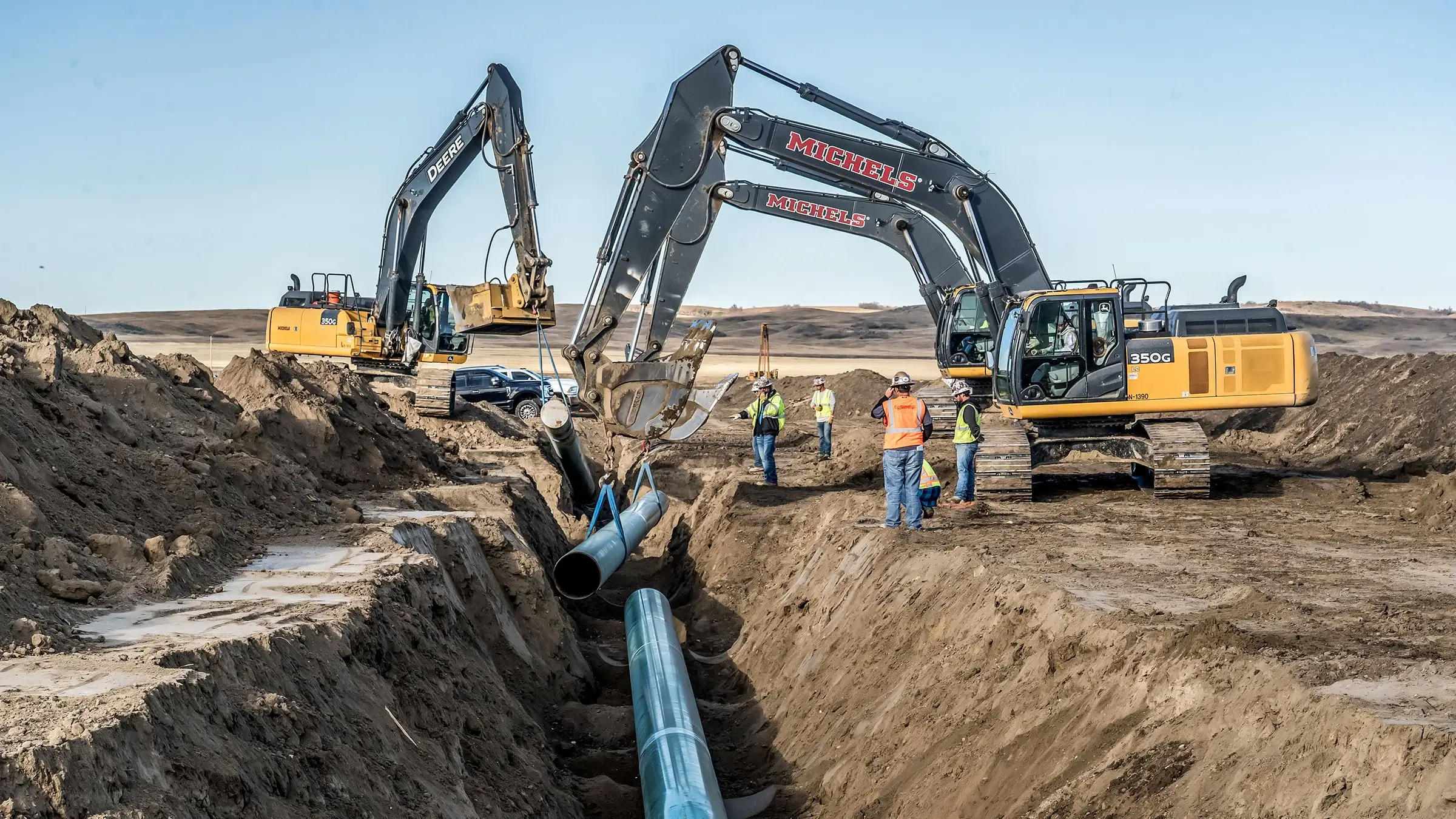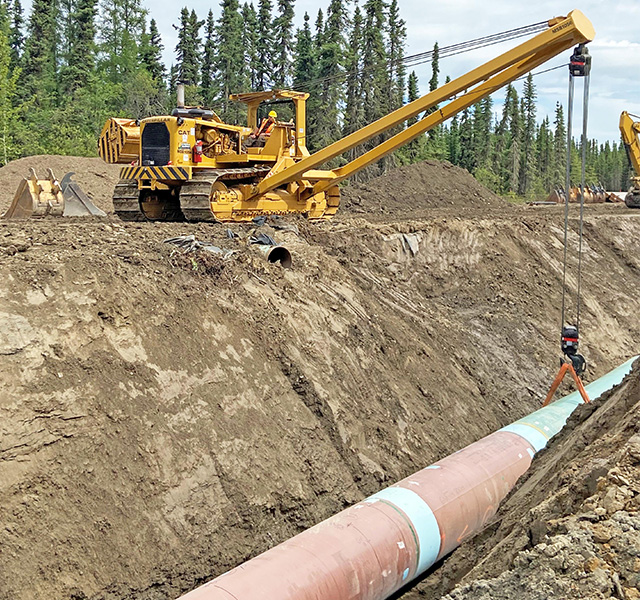Success Begins With Proper Creek Pipe HDPE installation
Wiki Article
What You Ought To Understand About Pipe Trenching Services: An In-depth Summary of Available Options
Pipe trenching services are vital for the installment and upkeep of underground utilities. They involve numerous techniques tailored to specific demands and atmospheres. Comprehending these methods is key for reliable job execution. Each alternative offers its very own set of benefits and difficulties. As the need for effective utility administration increases, recognizing what to think about when selecting a trenching solution becomes crucial. What elements should one focus on to ensure success?Understanding Pipe Trenching: What It Is and Why It Issues
Although typically overlooked, pipeline trenching is an essential procedure in various building and construction and utility tasks. This strategy involves excavating narrow trenches to promote the setup of pipelines for water, gas, sewage, and telecoms. The significance of pipeline trenching exists in its function in ensuring that these crucial systems are appropriately incorporated into facilities, making it possible for the risk-free and reliable delivery of required services.Proper trenching is crucial for keeping the integrity of pipelines and minimizing risks connected with dirt disintegration and cave-ins. It additionally permits effective evaluations and upkeep of below ground energies. Additionally, comprehending the neighborhood regulations and environmental considerations is vital, as inappropriate trenching can lead to expensive delays and legal concerns. Inevitably, pipeline trenching acts as the foundational step that sustains different building and construction undertakings, making it a considerable facet of modern infrastructure development.
Common Trenching Methods for Underground Energies
In the domain name of underground utilities, different trenching techniques play an important function in setup and upkeep - Creek Pipe Company. The open-cut trenching method, directional boring strategy, and hydro excavation procedure each deal unique benefits depending upon the details project needs. Recognizing these techniques is necessary for efficient and efficient utility monitoringOpen-Cut Trenching Approach
Open-cut trenching is a commonly used approach for setting up underground utilities, especially when the deepness and width of the trench permit reliable gain access to. This technique entails excavating a trench along the suggested path of the energy, supplying straight visibility and accessibility for setup. It is specifically helpful for projects that require considerable excavation, as it helps with fast setup and inspection. Nonetheless, it likewise necessitates cautious planning to decrease disruption to the surrounding location, including website traffic and existing structures. Open-cut trenching is most reliable in open spaces where the dirt problems agree with, yet it may be limited in city environments because of the visibility of existing energies and other underground barriers.Directional Boring Technique

Hydro Excavation Refine
Just how does hydro excavation stand out among typical trenching techniques for below ground energies? Hydro excavation uses high-pressure water and vacuum cleaner modern technology to securely get rid of dirt, permitting precise excavating around delicate below ground energies. This technique lessens the danger of harmful existing facilities contrasted to typical mechanical excavation. By using water to loosen the soil, hydro excavation provides a much less intrusive approach, minimizing the possibility for dirt compaction and making certain a cleaner worksite. In addition, the process enhances visibility throughout excavation, boosting general accuracy and efficiency. Hydro excavation is particularly useful in metropolitan areas where energy lines are densely packed, making it a preferred selection for service providers concentrated on security and precision in below ground jobs.Advantages of Trenching Services
While numerous techniques exist for setting up underground energies, trenching services supply distinctive advantages that make them a preferred selection for numerous projects. One substantial benefit is the cost-effectiveness of trenching, as it normally needs less customized equipment contrasted to options like hydro excavation. This often leads to lower labor and functional costs. In addition, trenching can accommodate a wide variety of utility kinds, including water, sewage system, and gas lines, supplying versatility for contractors.Moreover, trenching enables effective accessibility to multiple lines in a solitary excavation, reducing disturbance to the surrounding location. The process likewise makes it possible for exact installment and repair work, which is vital for adhering to governing requirements and making sure long-lasting integrity. Eventually, trenching can be implemented reasonably rapidly, lowering project timelines and permitting faster solution restoration. These advantages collectively make trenching services a functional alternative for many below ground utility jobs.Disadvantages and Obstacles of Trenching
Despite the numerous advantages of trenching services, there are noteworthy negative aspects and difficulties that must be taken into consideration. One substantial challenge is the potential for soil instability, which can cause collapses, posturing risks to workers and equipment. Furthermore, trenching can interrupt existing energy lines, requiring careful planning and sychronisation to prevent service disruptions. The process can likewise be lengthy, specifically in city locations where room is minimal and accessibility is limited. Trenching might need substantial licenses and regulative compliance, adding intricacy and possible hold-ups to jobs. Environmental concerns, such as dirt disintegration and damage to local communities, can arise from improper trenching techniques. Lastly, the costs associated with trenching, consisting of labor and devices, can escalate if unexpected concerns develop during the task, making it crucial for stakeholders to evaluate these challenges versus the benefits when thinking about trenching services.Key Variables to Think About When Choosing a Trenching Service
Choosing the appropriate trenching service can substantially affect the success of a task. Several vital variables ought to be examined to guarantee an ideal option. First, the firm's experience and expertise in trenching procedures are important; a reputable solution with a solid track document is usually extra trusted. Next, assessing the devices utilized is basic, as modern machinery can improve performance and accuracy. Additionally, it is considerable to take into consideration the series of services used, consisting of excavation deepness and dirt kind handling, to validate they meet particular job requirements.Another aspect to testimonial is the firm's online reputation; consumer testimonials and testimonials can provide insights into previous performance. Obtaining thorough quotes that outline costs and timelines will aid in spending plan monitoring. Ultimately, verifying conformity with neighborhood laws and sector requirements is important for preventing possible lawful problems. By reflecting on these factors, customers can make a notified decision when picking a trenching service.Safety Measures in Pipe Trenching
In pipeline trenching, security actions are essential to making certain employee protection and website stability. Key parts consist of using individual safety equipment, comprehensive excavation website evaluations, and distinct emergency feedback protocols. Carrying out these actions substantially lowers dangers connected with trenching operations.Individual Safety Tools
Creek Pipe Texas oilfield Safety in pipe trenching greatly counts on the proper use personal protective tools (PPE) Workers ought to use construction hats to shield against dropping objects, as well as high-visibility vests to improve their exposure on-site. Steel-toed boots are essential for foot security versus hefty devices and materials. In addition, handwear covers are necessary for hand safety, particularly when dealing with harsh or sharp things. Respirators may likewise be required in environments with dust or harmful fumes. Eye security, such as safety goggles, should be used to secure against particles. Listening to defense is crucial in loud job settings. By adhering to PPE standards, employees can substantially decrease the risk of injury and assure a much safer trenching procedure.Excavation Website Evaluation
Effectively checking the excavation website is an essential step in guaranteeing a risk-free pipe trenching procedure. This procedure entails evaluating the website for possible hazards such as underground utilities, unstable soil problems, and nearby structures. A complete analysis enables the recognition of risks that could endanger worker safety and security. Additionally, validating the dirt type and wetness degrees can aid figure out proper shoring techniques to avoid trench collapses. It is necessary to ensure that the site is clear of debris and that appropriate signs is presented to inform personnel of continuous procedures. Normal evaluations throughout the job can likewise assist detect any type of modifications in site conditions, allowing prompt modifications to safety procedures and work procedures.
Emergency Situation Response Protocols
Emergency situation reaction procedures are essential in mitigating threats linked with pipeline trenching operations. These methods assure that all employees are prepared to act swiftly and effectively in emergency situations. Secret elements include normal security drills, clear communication networks, and assigned fire escape. On top of that, first-aid kits and emergency get in touch with numbers must be conveniently obtainable on-site. Trenching operations must also consist of procedures for dealing with harmful scenarios, such as cave-ins or energy strikes. Educating employees on identifying potential dangers and comprehending their duties throughout an emergency situation is vital. Additionally, preserving an upgraded website security plan can significantly improve action efficiency. Overall, effective emergency situation preparedness cultivates a more secure working environment and lessens the impact of unforeseen occurrences.Expense Considerations for Trenching Services
Understanding the financial implications of trenching solutions is crucial for task preparation and budgeting. The expenses related to trenching can differ extensively based upon a number of aspects, consisting of project dimension, soil type, and deepness of the trench. Labor costs usually represent a substantial section of the total expenditure, as experienced operators are required for effective execution. Additionally, equipment leasing costs can add to the total budget, especially for specialized machinery.Site availability is one more essential variable; tough surface might require added sources, enhancing prices. Allowing and governing compliance can additionally contribute to costs, especially in metropolitan locations where guidelines are stringent.Lastly, unpredicted problems, such as running into existing energies, can bring about unanticipated prices and hold-ups. Consequently, acquiring comprehensive estimates from trusted trenching service carriers is vital for exact budgeting and guaranteeing effective project conclusion.Often Asked Inquiries
How much time Does a Regular Pipe Trenching Job Take?
The period of a regular pipeline trenching task differs considerably based upon elements such as depth, soil problems, and job intricacy. Typically, it can take anywhere from a couple of days to a number of weeks to complete.What Tools Is Typically Utilized in Pipe Trenching?

Exist Environmental Laws for Trenching Activities?
Ecological policies for trenching tasks commonly call for conformity with neighborhood, state, and federal guidelines. These guidelines intend to reduce eco-friendly interruption, safeguard water resources, and warranty proper waste monitoring during excavation and installation procedures.
Can Trenching Solutions Be Incorporated With Various Other Building Tasks?
Trenching solutions can indeed be integrated with various building jobs. By collaborating efforts, performances can be attained, decreasing interruptions while ensuring that all required infrastructure work is completed in a timely and economical manner.
What Prevail Dirt Types Run Into in Trenching?
Usual dirt types experienced in trenching include clay, sand, silt, and loam. Each type provides one-of-a-kind challenges, affecting excavation techniques and stability, necessitating careful planning to assure secure and reliable trenching operations.Report this wiki page